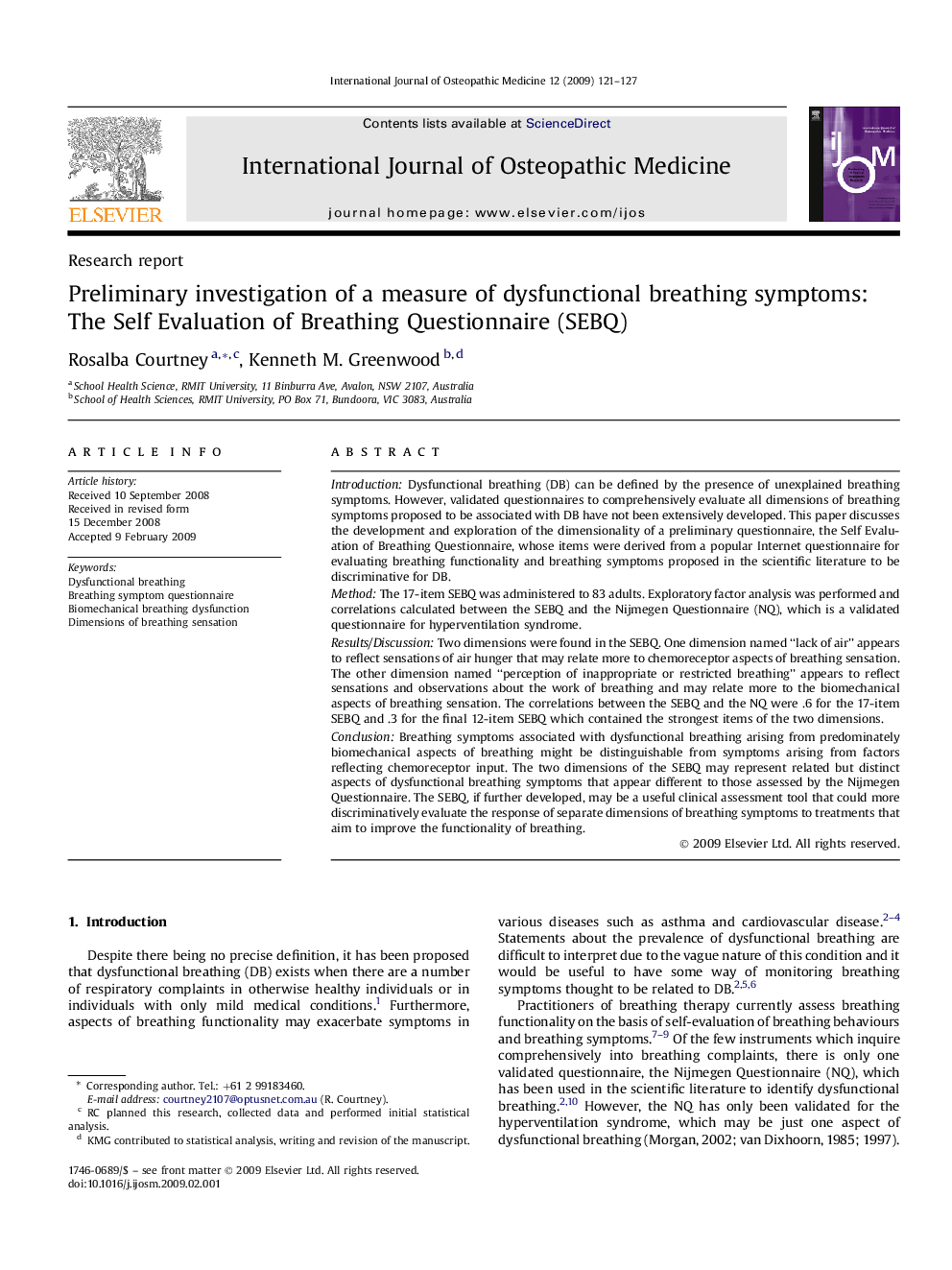| Article ID | Journal | Published Year | Pages | File Type |
|---|---|---|---|---|
| 2619010 | International Journal of Osteopathic Medicine | 2009 | 7 Pages |
IntroductionDysfunctional breathing (DB) can be defined by the presence of unexplained breathing symptoms. However, validated questionnaires to comprehensively evaluate all dimensions of breathing symptoms proposed to be associated with DB have not been extensively developed. This paper discusses the development and exploration of the dimensionality of a preliminary questionnaire, the Self Evaluation of Breathing Questionnaire, whose items were derived from a popular Internet questionnaire for evaluating breathing functionality and breathing symptoms proposed in the scientific literature to be discriminative for DB.MethodThe 17-item SEBQ was administered to 83 adults. Exploratory factor analysis was performed and correlations calculated between the SEBQ and the Nijmegen Questionnaire (NQ), which is a validated questionnaire for hyperventilation syndrome.Results/DiscussionTwo dimensions were found in the SEBQ. One dimension named “lack of air” appears to reflect sensations of air hunger that may relate more to chemoreceptor aspects of breathing sensation. The other dimension named “perception of inappropriate or restricted breathing” appears to reflect sensations and observations about the work of breathing and may relate more to the biomechanical aspects of breathing sensation. The correlations between the SEBQ and the NQ were .6 for the 17-item SEBQ and .3 for the final 12-item SEBQ which contained the strongest items of the two dimensions.ConclusionBreathing symptoms associated with dysfunctional breathing arising from predominately biomechanical aspects of breathing might be distinguishable from symptoms arising from factors reflecting chemoreceptor input. The two dimensions of the SEBQ may represent related but distinct aspects of dysfunctional breathing symptoms that appear different to those assessed by the Nijmegen Questionnaire. The SEBQ, if further developed, may be a useful clinical assessment tool that could more discriminatively evaluate the response of separate dimensions of breathing symptoms to treatments that aim to improve the functionality of breathing.
